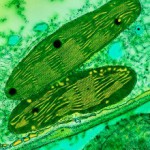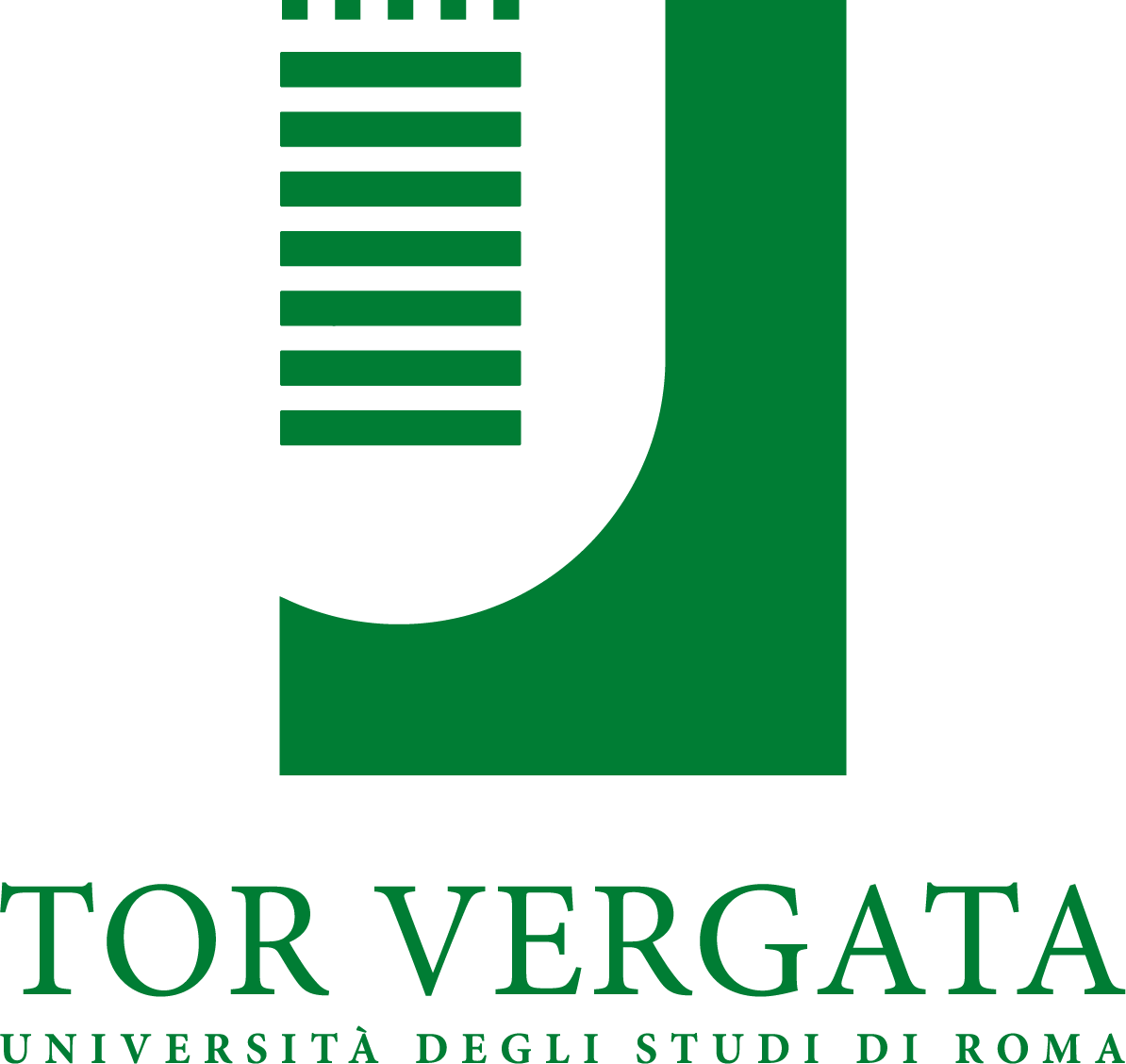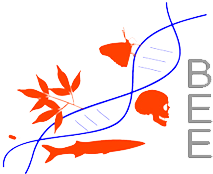:
the new york times, JUSTIN GILLIS - SEPT. 22, 2014
Researchers are trying to mimic the growing conditions expected to arise decades in the future as the air fills with heat-trapping gases and other pollutants from human activity, with some worrisome results.
 [...] The work has been going on in some form for nearly a decade, and the answers so far have been worrisome. Earlier this year, for instance, researchers at Harvard and elsewhere pooled data from the Illinois project with findings from scientists in three other countries. In a high-profile paper (http://www.nature.com/nature/journal/v510/n7503/abs/nature13179.html ), the experts reported that crops grown in environments designed to mimic future conditions have serious deficiencies of certain nutrients, compared with crops of today.
The Illinois researchers are trying to move past just documenting the potential trouble, though. The bigger question is: What can be done to make crops more resilient? [...]
“We know it’s not a perfect simulation of the future, but we believe it’s letting us get a jump start on creating solutions,” said Andrew D.B. Leakey, one of the University of Illinois scientists leading the work. [...]
Led by Dr. Leakey and Elizabeth A. Ainsworth, a scientist with the United States Agriculture Department, the researchers have created an unusual blend of climate science, agriculture and modern genetics to study possible routes to a more resilient food supply. [...]
http://www.nytimes.com/2014/09/23/science/testing-future-conditions-for-the-food-chain.html?ref=science
[...] The work has been going on in some form for nearly a decade, and the answers so far have been worrisome. Earlier this year, for instance, researchers at Harvard and elsewhere pooled data from the Illinois project with findings from scientists in three other countries. In a high-profile paper (http://www.nature.com/nature/journal/v510/n7503/abs/nature13179.html ), the experts reported that crops grown in environments designed to mimic future conditions have serious deficiencies of certain nutrients, compared with crops of today.
The Illinois researchers are trying to move past just documenting the potential trouble, though. The bigger question is: What can be done to make crops more resilient? [...]
“We know it’s not a perfect simulation of the future, but we believe it’s letting us get a jump start on creating solutions,” said Andrew D.B. Leakey, one of the University of Illinois scientists leading the work. [...]
Led by Dr. Leakey and Elizabeth A. Ainsworth, a scientist with the United States Agriculture Department, the researchers have created an unusual blend of climate science, agriculture and modern genetics to study possible routes to a more resilient food supply. [...]
http://www.nytimes.com/2014/09/23/science/testing-future-conditions-for-the-food-chain.html?ref=science
 [...] The work has been going on in some form for nearly a decade, and the answers so far have been worrisome. Earlier this year, for instance, researchers at Harvard and elsewhere pooled data from the Illinois project with findings from scientists in three other countries. In a high-profile paper (http://www.nature.com/nature/journal/v510/n7503/abs/nature13179.html ), the experts reported that crops grown in environments designed to mimic future conditions have serious deficiencies of certain nutrients, compared with crops of today.
The Illinois researchers are trying to move past just documenting the potential trouble, though. The bigger question is: What can be done to make crops more resilient? [...]
“We know it’s not a perfect simulation of the future, but we believe it’s letting us get a jump start on creating solutions,” said Andrew D.B. Leakey, one of the University of Illinois scientists leading the work. [...]
Led by Dr. Leakey and Elizabeth A. Ainsworth, a scientist with the United States Agriculture Department, the researchers have created an unusual blend of climate science, agriculture and modern genetics to study possible routes to a more resilient food supply. [...]
http://www.nytimes.com/2014/09/23/science/testing-future-conditions-for-the-food-chain.html?ref=science
[...] The work has been going on in some form for nearly a decade, and the answers so far have been worrisome. Earlier this year, for instance, researchers at Harvard and elsewhere pooled data from the Illinois project with findings from scientists in three other countries. In a high-profile paper (http://www.nature.com/nature/journal/v510/n7503/abs/nature13179.html ), the experts reported that crops grown in environments designed to mimic future conditions have serious deficiencies of certain nutrients, compared with crops of today.
The Illinois researchers are trying to move past just documenting the potential trouble, though. The bigger question is: What can be done to make crops more resilient? [...]
“We know it’s not a perfect simulation of the future, but we believe it’s letting us get a jump start on creating solutions,” said Andrew D.B. Leakey, one of the University of Illinois scientists leading the work. [...]
Led by Dr. Leakey and Elizabeth A. Ainsworth, a scientist with the United States Agriculture Department, the researchers have created an unusual blend of climate science, agriculture and modern genetics to study possible routes to a more resilient food supply. [...]
http://www.nytimes.com/2014/09/23/science/testing-future-conditions-for-the-food-chain.html?ref=science:
le scienze.it,22/9/2014
Un importante passo per “mettere il turbo” alla fotosintesi e ottenere un aumento delle rese agricole è stato compiuto da un gruppo di ricercatori del Rothamsted Research di Harpenden, nel Regno Unito, e della statunitense Cornell University, che lo illustrano su “Nature”. http://www.nature.com/nature/journal/vaop/ncurrent/full/nature13776.html
 Myat T. Lin, Alessandro Occhialini e colleghi hanno concentrato la loro attenzione sull'enzima Rubisco, che ha un ruolo chiave nella conversione dell'anidride carbonica (CO2) atmosferica in zuccheri, e che costituisce circa la metà di tutte le proteine presenti nelle foglie, tanto da essere probabilmente la proteina più diffusa in natura.
L'enzima Rubisco che si trova nelle piante ha però un'efficienza molto bassa, ovvero produce quantità limitate di zuccheri in tempi piuttosto lunghi, decisamente più piccole rispetto a quelle prodotte da altre varianti dello stesso enzima presenti nei cianobatteri, come per esempio in Synechococcus elongatus.
Nella loro ricerca Lin, Occhialini e colleghi hanno quindi creato piante di tabacco geneticamente modificate che non sfruttavano il loro enzima Rubisco naturale, ma, grazie all'inserimento nella pianta di geni ricavati da S. elongatus, la variante batterica più efficiente. [...] http://www.lescienze.it/news/2014/09/22/news/fotosintesi_veloce_efficienza_rubisco_batterico-2299577/
Myat T. Lin, Alessandro Occhialini e colleghi hanno concentrato la loro attenzione sull'enzima Rubisco, che ha un ruolo chiave nella conversione dell'anidride carbonica (CO2) atmosferica in zuccheri, e che costituisce circa la metà di tutte le proteine presenti nelle foglie, tanto da essere probabilmente la proteina più diffusa in natura.
L'enzima Rubisco che si trova nelle piante ha però un'efficienza molto bassa, ovvero produce quantità limitate di zuccheri in tempi piuttosto lunghi, decisamente più piccole rispetto a quelle prodotte da altre varianti dello stesso enzima presenti nei cianobatteri, come per esempio in Synechococcus elongatus.
Nella loro ricerca Lin, Occhialini e colleghi hanno quindi creato piante di tabacco geneticamente modificate che non sfruttavano il loro enzima Rubisco naturale, ma, grazie all'inserimento nella pianta di geni ricavati da S. elongatus, la variante batterica più efficiente. [...] http://www.lescienze.it/news/2014/09/22/news/fotosintesi_veloce_efficienza_rubisco_batterico-2299577/
 Myat T. Lin, Alessandro Occhialini e colleghi hanno concentrato la loro attenzione sull'enzima Rubisco, che ha un ruolo chiave nella conversione dell'anidride carbonica (CO2) atmosferica in zuccheri, e che costituisce circa la metà di tutte le proteine presenti nelle foglie, tanto da essere probabilmente la proteina più diffusa in natura.
L'enzima Rubisco che si trova nelle piante ha però un'efficienza molto bassa, ovvero produce quantità limitate di zuccheri in tempi piuttosto lunghi, decisamente più piccole rispetto a quelle prodotte da altre varianti dello stesso enzima presenti nei cianobatteri, come per esempio in Synechococcus elongatus.
Nella loro ricerca Lin, Occhialini e colleghi hanno quindi creato piante di tabacco geneticamente modificate che non sfruttavano il loro enzima Rubisco naturale, ma, grazie all'inserimento nella pianta di geni ricavati da S. elongatus, la variante batterica più efficiente. [...] http://www.lescienze.it/news/2014/09/22/news/fotosintesi_veloce_efficienza_rubisco_batterico-2299577/
Myat T. Lin, Alessandro Occhialini e colleghi hanno concentrato la loro attenzione sull'enzima Rubisco, che ha un ruolo chiave nella conversione dell'anidride carbonica (CO2) atmosferica in zuccheri, e che costituisce circa la metà di tutte le proteine presenti nelle foglie, tanto da essere probabilmente la proteina più diffusa in natura.
L'enzima Rubisco che si trova nelle piante ha però un'efficienza molto bassa, ovvero produce quantità limitate di zuccheri in tempi piuttosto lunghi, decisamente più piccole rispetto a quelle prodotte da altre varianti dello stesso enzima presenti nei cianobatteri, come per esempio in Synechococcus elongatus.
Nella loro ricerca Lin, Occhialini e colleghi hanno quindi creato piante di tabacco geneticamente modificate che non sfruttavano il loro enzima Rubisco naturale, ma, grazie all'inserimento nella pianta di geni ricavati da S. elongatus, la variante batterica più efficiente. [...] http://www.lescienze.it/news/2014/09/22/news/fotosintesi_veloce_efficienza_rubisco_batterico-2299577/:
la stampa.it - 22/9/2014
Negli animali riduce fino al 90% le neoplasie secondarie
Scienziati dell’università americana di Stanford hanno fabbricato in laboratorio una “super proteina” in grado di bloccare all’origine il processo che permette a un tumore di entrare nel sangue per invadere altri organi del corpo, dando origine cioè a delle metastasi.
Si tratta di una proteina ingegnerizzata, versione modificata della proteina naturale Axl, che funziona come una specie di “esca avvelenata”: agganciandosi a un’altra proteina denominata Gas6, le impedisce di innescare il meccanismo attraverso il quale la neoplasia può viaggiare da un tessuto all’altro. [...] Lo studio è pubblicato su Nature Chemical Biology. (http://www.nature.com/nchembio/journal/vaop/ncurrent/full/nchembio.1636.html)
http://www.lastampa.it/2014/09/22/scienza/creata-una-superproteina-che-blocca-iil-cancro-lkv4bF2HaZCe1loP9wXlML/pagina.html
http://www.repubblica.it/salute/ricerca/2014/09/21/news/tumori_creata_super_proteina_che_blocca_le_metastasi_sperimentata_sui_topi-96339352/
: radiotrescienza, 19/9/2014
Sono più di mezzo milione in Italia, quasi 27 milioni in tutto il mondo. Ma il numero dei malati di Alzheimer è destinato a salire nei prossimi anni. Complice l’allungamento della vita media, perché il rischio di contrarre questa malattia degenerativa, dopo i 65 anni, cresce all’aumentare dell’età. Le sue cause ci sono ignote, non ci sono cure, ma gli studi proseguono. In vista della XXI Giornata Mondiale dell’Alzheimer del prossimo 21 settembre, facciamo il punto sulla nostra conoscenza di questo morbo col giornalista Stefano Ciavatta, Arnaldo Benini, docente di neurochirurgia e neurologia all'Università di Zurigo, Giovanni Meli, ricercatore dell’Istituto europeo per la ricerca sul cervello (EBRI).
riascoltabile:http://www.radio3.rai.it/dl/portaleRadio/media/ContentItem-1b475b50-f04b-4cd6-9e11-3f608937a188.html
link:
Stefano Ciavatta, I dannati dell'Alzheimer, un silenzio tutto italiano, pubblicato il 12/09/2014 su pagina99.it http://www.pagina99.it/news/societa/6897/Sui-dannati-dell-Alzheimer-un-silenzio.html
Arnaldo Benini, Onda mortale di Alzheimer, ilsole24ore del 13/07/2014 http://www.banchedati.ilsole24ore.com/doc.get?uid=domenica-DO20140713025DAA
Giovanni Meli, Beta Amiloide: studi conformazionali e targeting subcellulare, la ricerca condotta all'EBRI, coordinata dal Prof. Antonino Cattaneo. http://www.ebri.it/index.php/it/i-laboratori/46-junior-group-leaders/129-giovanni-meli-junior-project-leader.html
Le iniziative in Italia per il 21 settembre, Giornata Mondiale dell'Alzheimer, http://www.alzheimer-aima.it/iniziative/giornata2014.htm
Il Rapporto Mondiale Alzheimer 2014, intitolato "Demenza e riduzione del rischio: analisi dei fattori di protezione modificabili" sarà disponibile a breve su www.alz.co.uk e www.alzheimer.it
I risultati dell’indagine sono disponibili su: http://www.bupa.com/dementia
radiotrescienza, 19/9/2014
Sono più di mezzo milione in Italia, quasi 27 milioni in tutto il mondo. Ma il numero dei malati di Alzheimer è destinato a salire nei prossimi anni. Complice l’allungamento della vita media, perché il rischio di contrarre questa malattia degenerativa, dopo i 65 anni, cresce all’aumentare dell’età. Le sue cause ci sono ignote, non ci sono cure, ma gli studi proseguono. In vista della XXI Giornata Mondiale dell’Alzheimer del prossimo 21 settembre, facciamo il punto sulla nostra conoscenza di questo morbo col giornalista Stefano Ciavatta, Arnaldo Benini, docente di neurochirurgia e neurologia all'Università di Zurigo, Giovanni Meli, ricercatore dell’Istituto europeo per la ricerca sul cervello (EBRI).
riascoltabile:http://www.radio3.rai.it/dl/portaleRadio/media/ContentItem-1b475b50-f04b-4cd6-9e11-3f608937a188.html
link:
Stefano Ciavatta, I dannati dell'Alzheimer, un silenzio tutto italiano, pubblicato il 12/09/2014 su pagina99.it http://www.pagina99.it/news/societa/6897/Sui-dannati-dell-Alzheimer-un-silenzio.html
Arnaldo Benini, Onda mortale di Alzheimer, ilsole24ore del 13/07/2014 http://www.banchedati.ilsole24ore.com/doc.get?uid=domenica-DO20140713025DAA
Giovanni Meli, Beta Amiloide: studi conformazionali e targeting subcellulare, la ricerca condotta all'EBRI, coordinata dal Prof. Antonino Cattaneo. http://www.ebri.it/index.php/it/i-laboratori/46-junior-group-leaders/129-giovanni-meli-junior-project-leader.html
Le iniziative in Italia per il 21 settembre, Giornata Mondiale dell'Alzheimer, http://www.alzheimer-aima.it/iniziative/giornata2014.htm
Il Rapporto Mondiale Alzheimer 2014, intitolato "Demenza e riduzione del rischio: analisi dei fattori di protezione modificabili" sarà disponibile a breve su www.alz.co.uk e www.alzheimer.it
I risultati dell’indagine sono disponibili su: http://www.bupa.com/dementia
 radiotrescienza, 19/9/2014
Sono più di mezzo milione in Italia, quasi 27 milioni in tutto il mondo. Ma il numero dei malati di Alzheimer è destinato a salire nei prossimi anni. Complice l’allungamento della vita media, perché il rischio di contrarre questa malattia degenerativa, dopo i 65 anni, cresce all’aumentare dell’età. Le sue cause ci sono ignote, non ci sono cure, ma gli studi proseguono. In vista della XXI Giornata Mondiale dell’Alzheimer del prossimo 21 settembre, facciamo il punto sulla nostra conoscenza di questo morbo col giornalista Stefano Ciavatta, Arnaldo Benini, docente di neurochirurgia e neurologia all'Università di Zurigo, Giovanni Meli, ricercatore dell’Istituto europeo per la ricerca sul cervello (EBRI).
riascoltabile:http://www.radio3.rai.it/dl/portaleRadio/media/ContentItem-1b475b50-f04b-4cd6-9e11-3f608937a188.html
link:
Stefano Ciavatta, I dannati dell'Alzheimer, un silenzio tutto italiano, pubblicato il 12/09/2014 su pagina99.it http://www.pagina99.it/news/societa/6897/Sui-dannati-dell-Alzheimer-un-silenzio.html
Arnaldo Benini, Onda mortale di Alzheimer, ilsole24ore del 13/07/2014 http://www.banchedati.ilsole24ore.com/doc.get?uid=domenica-DO20140713025DAA
Giovanni Meli, Beta Amiloide: studi conformazionali e targeting subcellulare, la ricerca condotta all'EBRI, coordinata dal Prof. Antonino Cattaneo. http://www.ebri.it/index.php/it/i-laboratori/46-junior-group-leaders/129-giovanni-meli-junior-project-leader.html
Le iniziative in Italia per il 21 settembre, Giornata Mondiale dell'Alzheimer, http://www.alzheimer-aima.it/iniziative/giornata2014.htm
Il Rapporto Mondiale Alzheimer 2014, intitolato "Demenza e riduzione del rischio: analisi dei fattori di protezione modificabili" sarà disponibile a breve su www.alz.co.uk e www.alzheimer.it
I risultati dell’indagine sono disponibili su: http://www.bupa.com/dementia
radiotrescienza, 19/9/2014
Sono più di mezzo milione in Italia, quasi 27 milioni in tutto il mondo. Ma il numero dei malati di Alzheimer è destinato a salire nei prossimi anni. Complice l’allungamento della vita media, perché il rischio di contrarre questa malattia degenerativa, dopo i 65 anni, cresce all’aumentare dell’età. Le sue cause ci sono ignote, non ci sono cure, ma gli studi proseguono. In vista della XXI Giornata Mondiale dell’Alzheimer del prossimo 21 settembre, facciamo il punto sulla nostra conoscenza di questo morbo col giornalista Stefano Ciavatta, Arnaldo Benini, docente di neurochirurgia e neurologia all'Università di Zurigo, Giovanni Meli, ricercatore dell’Istituto europeo per la ricerca sul cervello (EBRI).
riascoltabile:http://www.radio3.rai.it/dl/portaleRadio/media/ContentItem-1b475b50-f04b-4cd6-9e11-3f608937a188.html
link:
Stefano Ciavatta, I dannati dell'Alzheimer, un silenzio tutto italiano, pubblicato il 12/09/2014 su pagina99.it http://www.pagina99.it/news/societa/6897/Sui-dannati-dell-Alzheimer-un-silenzio.html
Arnaldo Benini, Onda mortale di Alzheimer, ilsole24ore del 13/07/2014 http://www.banchedati.ilsole24ore.com/doc.get?uid=domenica-DO20140713025DAA
Giovanni Meli, Beta Amiloide: studi conformazionali e targeting subcellulare, la ricerca condotta all'EBRI, coordinata dal Prof. Antonino Cattaneo. http://www.ebri.it/index.php/it/i-laboratori/46-junior-group-leaders/129-giovanni-meli-junior-project-leader.html
Le iniziative in Italia per il 21 settembre, Giornata Mondiale dell'Alzheimer, http://www.alzheimer-aima.it/iniziative/giornata2014.htm
Il Rapporto Mondiale Alzheimer 2014, intitolato "Demenza e riduzione del rischio: analisi dei fattori di protezione modificabili" sarà disponibile a breve su www.alz.co.uk e www.alzheimer.it
I risultati dell’indagine sono disponibili su: http://www.bupa.com/dementia





Università di Tor Vergata